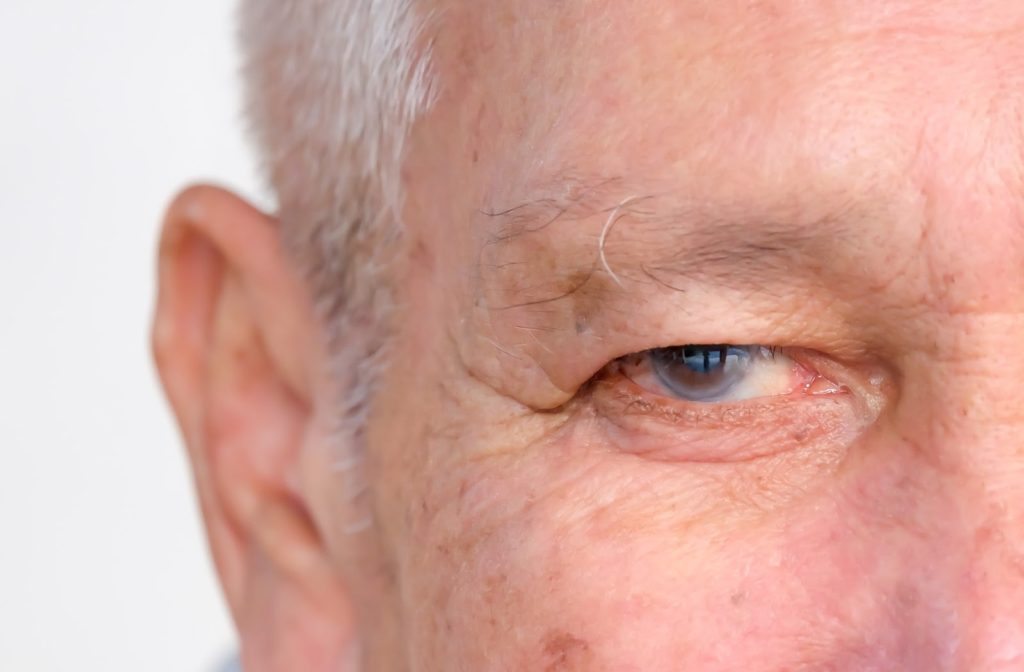Glaucoma is the “silent thief of sight” because it can develop with minimal symptoms until vision loss occurs. While glaucoma can be dangerous, an early diagnosis can help protect your vision.
Your optometrist can identify early signs of glaucoma when they examine your eyes, but can you identify any warning signs of glaucoma yourself?
Continue reading to learn more about glaucoma, including 5 early signs it may be developing.
5 Early Signs of Glaucoma
While most forms of glaucoma develop symptom-free until vision loss occurs, acute angle-closure glaucoma has several early signs of development. These signs mean you should visit your optometrist immediately—this form of glaucoma can cause rapid vision loss.
The following symptoms are early signs of acute angle-closure glaucoma, a serious condition. Visit your eye doctor right away if you experience any of these early glaucoma signs:
- Hazy or blurred vision: Distorted or blurry vision accompanied by other symptoms
- Eye pain: Severe pain around your eyes & head
- Eye redness: Red eyes caused by increased eye pressure
- Colored halos around lights: Colored bright circles forming around light sources
- Nausea or vomiting: Nausea or vomiting alongside eye pain
What Is Glaucoma?
Glaucoma is a group of eye diseases that damage your optic nerve. As glaucoma progresses, it can lead to permanent vision loss. Many, but not all, forms of glaucoma raise your intraocular pressure (IOP).
What Causes Glaucoma?
Glaucoma damages the optic nerve. The optic nerve is responsible for sending signals to the brain so you can see, but glaucoma can gradually deteriorate this nerve. Optic nerve damage usually, but not always, happens due to increased pressure within the eye.
Eye pressure rises when fluid (aqueous humor) in the eye cannot drain properly. It typically drains through the angle where your iris and cornea meet. If there is too much fluid or the angle is unable to drain well, your IOP will rise.
It is important to remember that in certain types of glaucoma, optic nerve damage occurs without an increase in eye pressure. This makes it very important that comprehensive eye health exams are performed annually, (or more often as directed by your eye doctor), especially if glaucoma runs in your family.
Who Is At Risk of Glaucoma?
Anyone can develop glaucoma, but some people are more at risk than others. Several factors can increase your risk of glaucoma. If you’re at a higher risk of developing this disease, your optometrist may want to examine your eyes more frequently.
Be aware of the risk factors related to glaucoma:
- Age
- Certain medical conditions, including hypertension and diabetes
- Extreme myopia or hyperopia
- Family history
- Genetics
- High intraocular pressure
- Long-term corticosteroid use
- Previous eye injury or surgery
- Thinner corneas
Is Glaucoma Hereditary?
While the exact causes of glaucoma are not fully understood, genetics is believed to play a significant role in its development. If someone in your immediate family, such as a parent or sibling, has glaucoma, your risk of developing the condition is higher compared to individuals with no family history of glaucoma.
Having a family history of glaucoma doesn’t guarantee that you will develop the condition. Conversely, you can still develop glaucoma even if there is no known family history. For this reason, it is important to be aware of the early signs of glaucoma, and to make an appointment with your optometrist if you suspect you may be developing glaucoma.
If you have a family history of glaucoma, it is a good idea to inform your optometrist so they can closely monitor your eye health. This can help minimize potential vision loss if the glaucoma is identified early on.
Types of Glaucoma
There are many types of glaucoma. Each type of glaucoma develops differently, but all of them place your vision at risk. While open-angle and angle-closure glaucoma are considered the main forms of this disease, there are at least 8 other types of glaucoma.
Open-Angle Glaucoma
Open-angle glaucoma, or primary open-angle glaucoma, is the most common form people develop. It affects over 3 million Americans, slowly damaging their vision. This damage occurs when your eye’s drainage canals become clogged.
Your IOP rises because the fluid in your eye cannot drain properly. The entrances to your drainage canals are clear and open, but problems occur further in the drainage system. Think of this problem as a clogged pipe, causing gradual fluid build-up.
Your eye pressure rises because of this fluid build-up, causing damage to your optic nerve. With time, this disease can lead to irreversible vision loss.
Angle-Closure Glaucoma
Angle-closure glaucoma is less common, but it can have significant complications. It occurs when the drainage canals are completely or partially blocked, similar to a covered drain. Angle-closure glaucoma can progress rapidly or gradually.
When you have angle-closure glaucoma, your iris is not as wide and open as it should be. Instead, it pushes forward and affects your eye’s drainage angle. This angle can become narrow or completely blocked off, slowing or preventing fluid from moving, causing increased eye pressure.
The state of this angle determines the type of angle-closure glaucoma you have. If fluid can still move through the drainage angle, it’s known as narrow angle-closure glaucoma.
A completely blocked-off drainage angle is called acute angle-closure glaucoma. This form of the disease is a medical emergency and can cause rapid vision loss if left untreated.
Normal-Tension Glaucoma
Normal-tension glaucoma causes optic nerve damage without raising your eye pressure. Because eye pressure doesn’t rise in this form of glaucoma, experts believe this disease develops due to other factors.
Researchers continue to learn more about normal-tension glaucoma. Abnormalities in blood flow to the optic nerve and structural weakness in the optic nerve tissue are potential causes of this problem.
Secondary Glaucoma
Secondary glaucoma is an umbrella term for any form of glaucoma with an identifiable cause for increased eye pressure. Someone may develop secondary glaucoma due to an eye injury, inflammation, or advanced cases of cataracts or diabetes.
Some types of secondary glaucoma include:

Don’t Let Glaucoma Steal Your Vision
Glaucoma can lead to permanent vision loss, but you can help protect your eye health. Never ignore the symptoms of acute angle-closure glaucoma, and remember to book regular eye exams. These exams can help your eye doctor identify glaucoma in its earliest stages and prevent vision loss..
Contact your eye doctor when it’s time for an eye exam or if you are having trouble with your vision.



